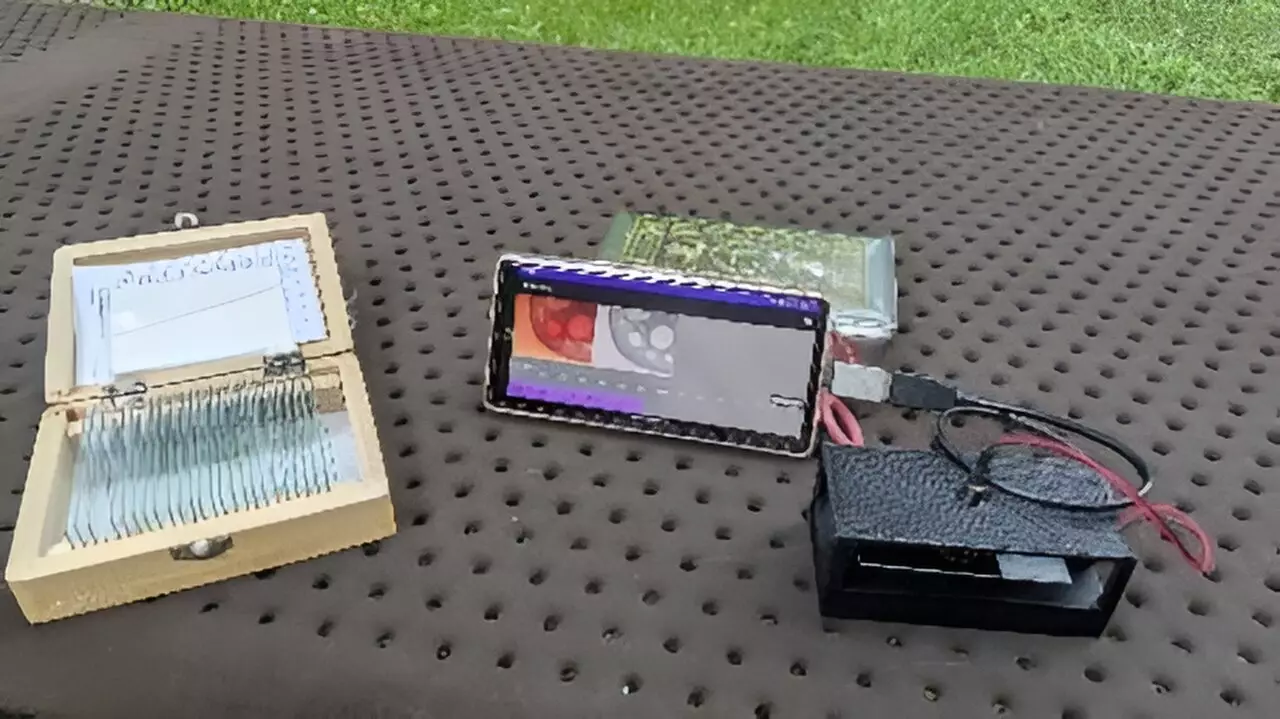In the continuously evolving field of microscopy, a groundbreaking innovation is on the horizon. Researchers have unveiled a smartphone-based digital holographic microscope that promises precision in 3D measurements while being affordable and highly portable. This advancement has the potential to democratize access to advanced imaging technology, facilitating its use in diverse scenarios, including education and medical diagnostics, especially in resource-limited regions.
Digital holographic microscopy (DHM) is a sophisticated technique that allows for the intricate analysis of samples without the need for staining or elaborate preparations. By capturing interference patterns created by a reference beam and light scattered from the target object, DHM reconstructs holograms to yield detailed 3D representations. The capabilities of traditional DHM are often curtailed by the requirement for complex optical setups and considerable computational power, which typically necessitates the use of bulky personal computers. Consequently, portable and user-friendly solutions have been lacking—until now.
Led by Yuki Nagahama of the Tokyo University of Agriculture and Technology, researchers have made significant strides in integrating smartphone technology into DHM. The initiative utilizes a compact and simplified optical system manufactured through 3D printing, coupled with the computational power of smartphones. This synergy not only reduces costs but also enhances portability, thus broadening the microscope’s potential applications across various fields.
Nagahama highlights the transformative power of this new design: “By employing a straightforward optical system and integrating smartphone capabilities, we have opened the door to practical applications in settings such as education and healthcare.”
A remarkable feature of this microscope is its ability to provide almost real-time hologram reconstruction. Users can engage with holographic images directly on their smartphone screens, utilizing pinch gestures for zoom control. This interactive experience transforms traditional imaging into a dynamic learning and diagnostic tool. The use of an Android-based application streamlines the hologram capture process while allowing for immediate analysis, making it especially advantageous in fieldwork or teaching environments.
By boasting a frame rate of up to 1.92 frames per second, this innovative microscope can generate quick and efficient visual outputs, enhancing the user experience while working with static samples. The implications of this advancement are profound, as it allows for immediate observation and analysis, significantly speeding up decision-making processes in various applications, especially in educational setups.
Despite the advancements in smartphone-based digital holography, prior technologies were often limited by the processing power of smartphones. Earlier models typically required external devices for hologram processing or could not offer real-time feedback. The development of the new microscope circumvents these issues through a cut-down algorithm known as band-limited double-step Fresnel diffraction. This technique minimizes the data processing load by reducing the number of required data points, thus achieving rapid image reconstruction suitable for smartphones.
The pioneers of this technology understand the challenges of early models, as Nagahama reflects on his initial work with portable holographic systems that relied on laptops: “The advent of smartphones opened new avenues for enhancing these systems, paving the way for broader applications across multiple sectors.”
The implications of this smartphone-based digital holographic microscope extend significantly into the medical domain. For instance, it holds promise as a diagnostic tool for diseases such as sickle cell anemia in developing nations. The ease of use and accessibility of smartphones make it possible for healthcare professionals or even students to conduct examinations without the burdens of traditional diagnostic tools.
In education, the capacity to view living organisms in real-time presents an exhilarating opportunity for students. The microscope can facilitate hands-on learning experiences that foster curiosity and understanding of biological processes—an experience that is often limited to well-resourced institutions.
The research team is already considering the next steps in refining this technology. Integrating deep learning algorithms presents an exciting frontier to enhance image accuracy and quality further. Current challenges, such as the generation of unintended additional images during hologram reconstruction, could be mitigated with advanced machine learning techniques.
As smartphone capabilities continue to evolve, the potential for applications in diverse fields only expands. From more precise medical diagnostics to enriching educational curricula, this innovation stands to reshape our approach to observation and documentation in countless disciplines.
The smartphone-based digital holographic microscope represents a pivotal advancement in microscopy. By harnessing the accessibility of smartphones and the power of 3D printing, researchers have not only created a tool that is portable and affordable but one that opens new horizons for education and medical diagnostics. As further developments unfold, it is clear that this innovative approach will play a significant role in transforming how we observe and interact with the microscopic world.


Leave a Reply